A Manhattan Project historian comments on ‘Oppenheimer’
By Chris Griffith | July 28, 2023
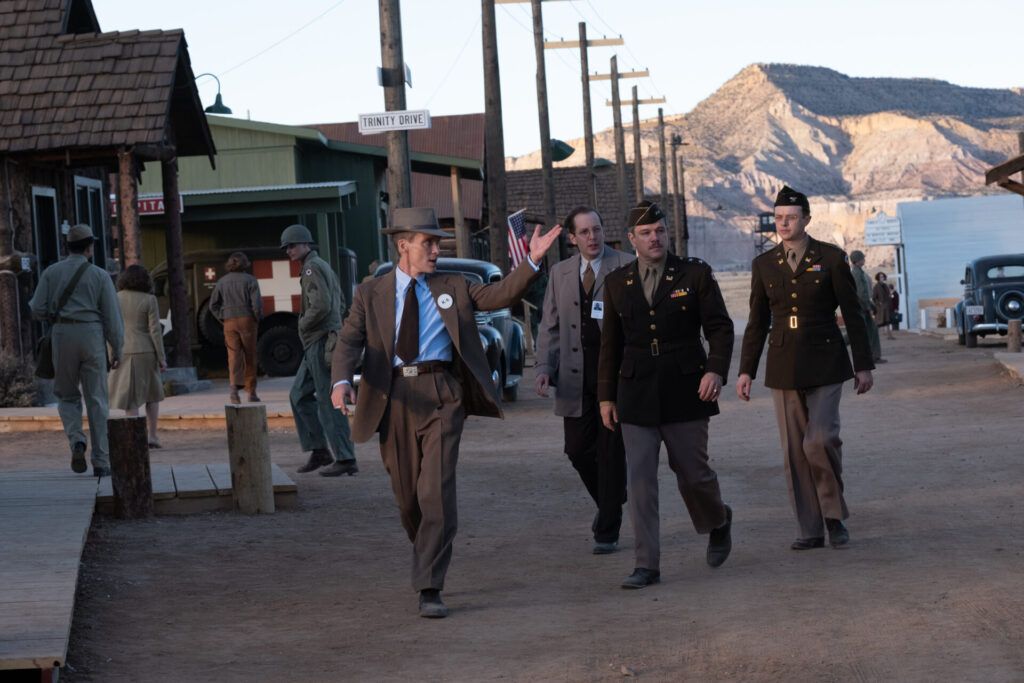 J. Robert Oppenheimer (as portrayed by actor Cillian Murphy) points to buildings of the Los Alamos Laboratory in a scene from Christopher Nolan's film 'Oppenheimer' (Image courtesy of Universal Pictures)
J. Robert Oppenheimer (as portrayed by actor Cillian Murphy) points to buildings of the Los Alamos Laboratory in a scene from Christopher Nolan's film 'Oppenheimer' (Image courtesy of Universal Pictures)
With any film about a historical event, one can expect portions of the movie will be accurate and others modified for theatrical purposes. Those who are familiar with the story of the Manhattan Project and of the life of its chief scientist, J. Robert Oppenheimer, will have a slightly different lens to view Christopher Nolan’s adaption of the Pulitzer Prize-winning book, American Prometheus, written by Kai Bird and Martin J. Sherwin. I leave it to professional critics to discuss the merits of the film, which overall I found excellent, and will give a slightly closer look at some technical details shown in the film.
Nolan walked the fine line of providing enough technical details to tell the story of the Manhattan Project, but not as much as to require a college degree in physics to understand what was happening. Some of the film’s simplifications were done by almost completely ignoring the work performed at other Manhattan Project’s sites—namely at Hanford, Washington, and Oak Ridge, Tennessee. Their only mention was in reference to their production of fissionable materials, as Oppenheimer drops representative marbles into glass bowls. From all my readings about the subject, this scene was purely fictional, but it did convey very well the challenge the project faced as it raced to produce enough materials for the weapons Oppenheimer and his fellow scientists were developing at the Los Alamos Laboratory. I think the sense of the scale of the Manhattan Project is probably not palpable from the film.
For many viewers, one of the “surprises” is probably the scene of Oppenheimer poisoning the apple for Patrick Blackett, his tutor at Cambridge. Unless you have a collection of books about Oppenheimer’s life on your bookshelf, this event is usually one that is not often told and certainly one that looked fictional. But, as surreal as it looks, this event did happen, and the only uncertainty was the exact poison that he used. Since Potassium Cyanide is a poison known to most moviegoers, Nolan made the choice to use that as a clear indicator of what was occurring. As to Oppenheimer being introduced to Niels Bohr by his mentor at Cambridge, Patrick Blackett, it is incorrect. That introduction was made via Ernest Rutherford, the head of the Cambridge Lab, in the spring of 1926. The conversation between them that follows, however, is factual.
Nolan’s film also tends to distort the Bohr-Heisenberg connection. For those unaware, there was a meeting in September 1941 in Copenhagen between the two scientists. What happened at the meeting is still debated to this day: Was Heisenberg warning Bohr that Germany believed it could make an atomic weapon? Or was he hoping that Bohr might prevent the United States from pursuing the development of an atomic bomb to be used against Germany? After Bohr’s dramatic escape (which is partially told in the film), he would have lent more insight to the key figures as to his understanding of the German program.
As for the accuracy of the film’s depiction of the Trinity test itself, Nolan decided early on that he would not use computer generated imagery (CGI) for the explosion, but rather practical effects. For too long, audiences have been conditioned to hear and see a nuclear explosion as one simultaneous event. But Nolan’s Trinity explosion is correct: A light “brighter than a thousand suns” flashes across the screen and, seconds later, the tremendous roar and blast wave reaches the observers. (To see the actual footage of the Trinity test and sound delay, I recommend watching the documentary, Trinity and Beyond.) However, I was expecting to see how the mushroom cloud form and grow, which is to experts a very familiar shape, but that did not occur in the film. For most viewers, though, this omission will go unnoticed. I did like the fact Nolan included initially moving the mattresses under the Gadget while it was first being lifted up the test tower. This was a nice factual detail for those who caught it.
A minor issue I had was with Donald Hornig and the kill switch. Hornig, a Harvard trained physicist, was the one who designed the high-voltage capacitors that were needed for the implosion to be triggered. I am not certain that this switch was actually a big red button, however perfect for the screen. I had read instead that he actually had his hand on the switch—not near it—as he was well aware of the fast reaction time he would need to stop the test.
Nolan did capture many of the events that actually occurred at Compania Hill (an observation point located about 20 miles northwest of ground zero), from Edward Teller applying sunscreen to Ernest Lawrence initially wanting to watch it from inside the car. (Richard Feynman remained in the car and was probably the only person to view the test directly.) I did find, however, the film’s over-emphasis on the atmospheric ignition debate a bit too much. I do not recall ever reading that Oppenheimer spoke with Einstein about this issue. First, that was not Einstein’s area of expertise. Second, that would have been a big security breach as well. It was Hans Bethe who first confirmed that the probabilities for an atomic bomb explosion to ignite the atmosphere and destroy the world were “near zero” (nothing is ever zero in quantum mechanics). The calculations were checked again by another physicist, Emil Konopinski, who would later suggest the use of tritium as a fuel for the hydrogen bomb.
The film skips back and forth through time as it weaves its story. This gets complicated when the film covers both Oppenheimer’s Atomic Energy Commission security hearing, which occurred in 1954, and Strauss’ congressional confirmation hearing in 1959. I suspect many viewers may have believe these events happened in parallel.
Another questionable scene was the ending of the post-war meeting between President Truman and Oppenheimer. In the film, we hear Truman telling Dean Acheson, his State Secretary, that he never wants to see this “crybaby” again. Truman actually made his comment about Oppenheimer almost a year after their meeting in a letter to Acheson. Truman’s reaction to Oppenheimer’s “blood on my hands” lament is also a bit murky, as the accounts of the meeting have changed over time. However, the intent of the response from Truman is correct.
The last comment I have on the film is more about how little was truly shown regarding the horrors of dropping the atomic bombs over Japan. Viewers only get one scene at Los Alamos, in which it looks like Robert Serber—who had gone to Hiroshima and Nagasaki to document the bombings—appears to present a slideshow of photographs to the scientists. But none of that imagery is shown to the viewers. Instead, we see Oppenheimer’s own reaction to those images—an obvious deliberate choice by the film director. The closest we get to seeing the reality of the atomic bombings is when, leaving the presentation, Oppenheimer steps into a charred corpse during a nightmarish sequence. For those familiar with the unclassified photos from Hiroshima, this corpse looked very close to one of those photos of a charred victim.
Nolan’s film cannot be considered technically accurate throughout. But for any Hollywood adaption, adjustments must be made. Overall, I think the film is close enough to the historical events, and most of the adjustments made were for understandable artistic reasons. I am sure other technical elements will pop up to my eyes—and those of other experts—after watching this immensely dense film again.
Oppenheimer’s vision for arms control is still upon us
‘Oppenheimer’ is terrific. But it’s just a movie
Thought-provoked by ‘Oppenheimer’
‘Oppenheimer’, the bomb, and arms control, then and now
‘Oppenheimer’ depicts a man becoming powerful—and irrelevant
Nuclear weapons since Oppenheimer: Who’s in control?
What ‘Oppenheimer’ can teach today’s scientists
Nolan’s ‘Oppenheimer’: an artistic visual tapestry of the bomb’s science and power intricacies
Widening the field of view on ‘Oppenheimer’
Together, we make the world safer.
The Bulletin elevates expert voices above the noise. But as an independent nonprofit organization, our operations depend on the support of readers like you. Help us continue to deliver quality journalism that holds leaders accountable. Your support of our work at any level is important. In return, we promise our coverage will be understandable, influential, vigilant, solution-oriented, and fair-minded. Together we can make a difference.
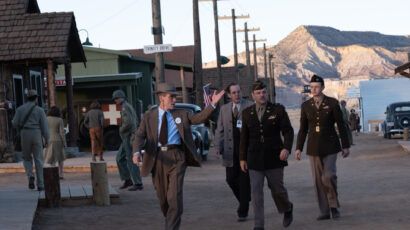

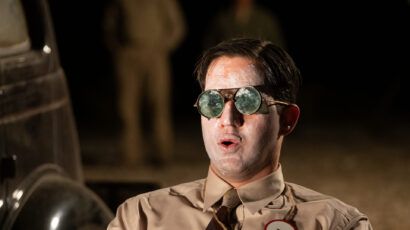
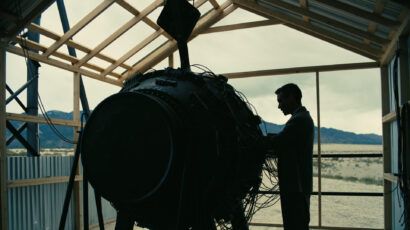
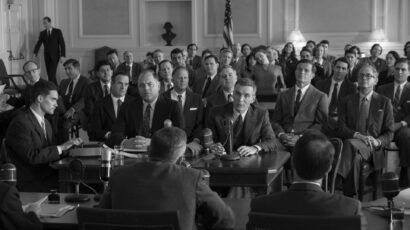
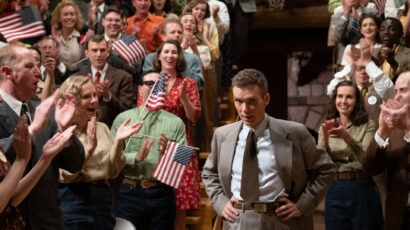
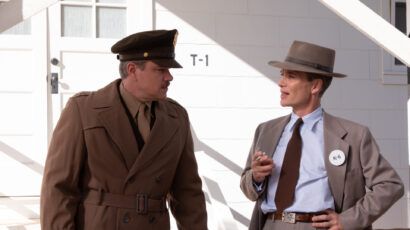

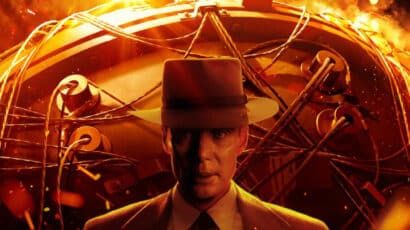
















I believe there was a sequence issue in the film. Oppenheimer visits the Chicago reactor site when Fermi has just achieved sustained criticality. In the film, this occurs after the plutonium marble jar was already being filled. How were they making plutonium at that time since the Hanford reactor went on line about two years after the Chicago test reactor’s success? Maybe I missed something.
All very interesting but what I want to know, is it safe to live in NM and grow one’s own fruit and vegetables? Most of all, will it be safe to eat what you grow? Has anyone done an up to date soil test in the whole of New Mexico? I would love to know. I think the film in question has opened a can of much needed worms.
With regard to the scale of the Manhattan Project, I was blown away when reading The Making of the Atomic Bomb by Richard Rhodes to learn that the Project built an industrial operation in two years that equaled the entire US auto industry. Just mind boggling.
Rhodes books are really the ‘bible’ of complete history, and available so many decades ago. There are also some spectacular coffee table books of many titles with outstanding photos that cover just about anything done at the test sites over the 50’s.
The movie is Oppenheimer not the Manhattan project.
The smear of Colonel Boris Pash was unfortunate. His background is quite fascinating.
I was disappointed they did not discuss the differences between Fat Man and Little Boy.
But the story was just Oppie, with a lead up to the test, and then the Red Scare era and his loss of credentials. Watch the much older but very well done Paul Neuman movie, ‘Fat Man and Little Boy’. It covers much more of entire project.
I realize that fully acknowledging the contributions of the many scientists who made the Manhattan project possible is unrealistic, but I do think that physicist Gregory Breit should have been credited with doing the confirmation calculations that demonstrated the “near zero” chance of an uncontrolled nuclear chain reaction. He worked with the Chicago team and was known as the best mathematical physicist at that time.
I had a fun time trying to match up the many scientists in scenes, that were not introduced, but by reputation and knowledge of photos, tried to ‘find’ them in some scenes. I hoped to see the ‘paper scraps’ in the air during the test scene to predict the power of the bomb.
PLEASE provide an email button so this article can be shared and inform others. 07/31/2023
Dude just copy the link on the address bar of your web browser and paste it into an email.
I’m biased because Emil was my grandmother’s nephew, but I was never aware that this article was a re-calculation of Bohr’s work. Thanks for mentioning Emil. I was also told that that he wasn’t in the famous Fermi photo because he had been sent out to Berkeley and that he was part of the group that scouted the SW for the Los Alamos site. I took a look at this article and there is no reference to previous work by Bohr. Was this an oversight or did Bohr just throw out an idea to be pursued further? Konopinski, E. J;… Read more »
Sorry, I have Bohr on the brain for some reason. (Probably his interactions with Feynman) I meant Bethe. Bethe seems to be the idea person here. I had a professor who told me that every time he thought he had an original idea, he found that (fill in the blank) thought of it first. In his case, the subject was economics and Veblen was the economist.
I was impressed that this film was sold out on a Sunday afternoon. A very good compilation of the many books I’ve read about Oppie and the works at Los Alamos I hope people also have seen the much earlier film not just focused on Oppenheimer, but on the overall project. “Fat Man and Little Boy’. I think it was a very good summary for its time.
The film is excellent. It’s a film with a goal of reaching a large audience, not a documentary. My only suggestion would be identifying the various characters during their first couple of appearances to assist less informed audience goers of their historical significance.
This is definitely a problem with the film. There are so many characters. I’ve read the Rhodes book and several others about the whole project so I was relatively familiar with the major players and had some idea who they were. Short of that, it must be a blur. Also I’m not sure the message comes through how unique and amazing each of them were (to our benefit, and to the ending of the Pacific War).